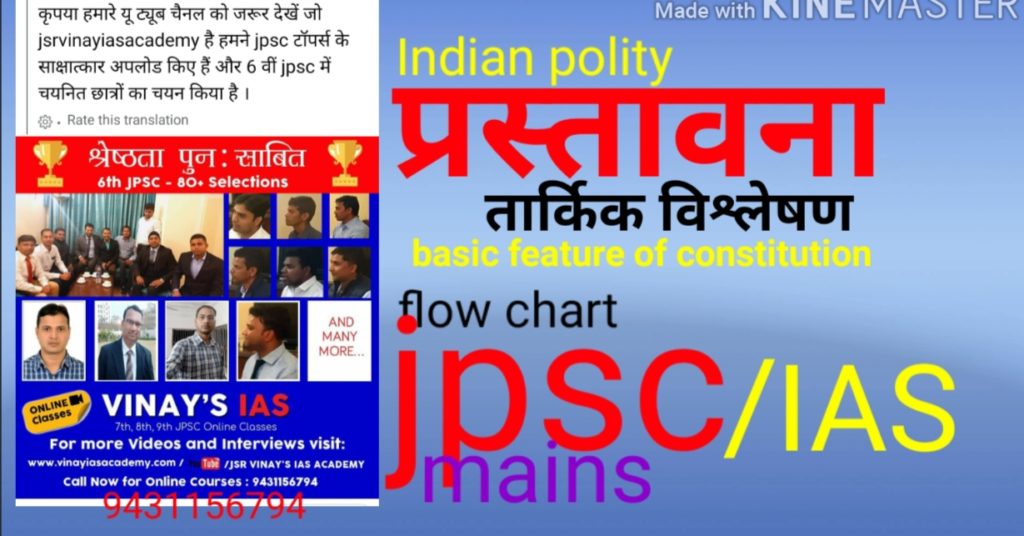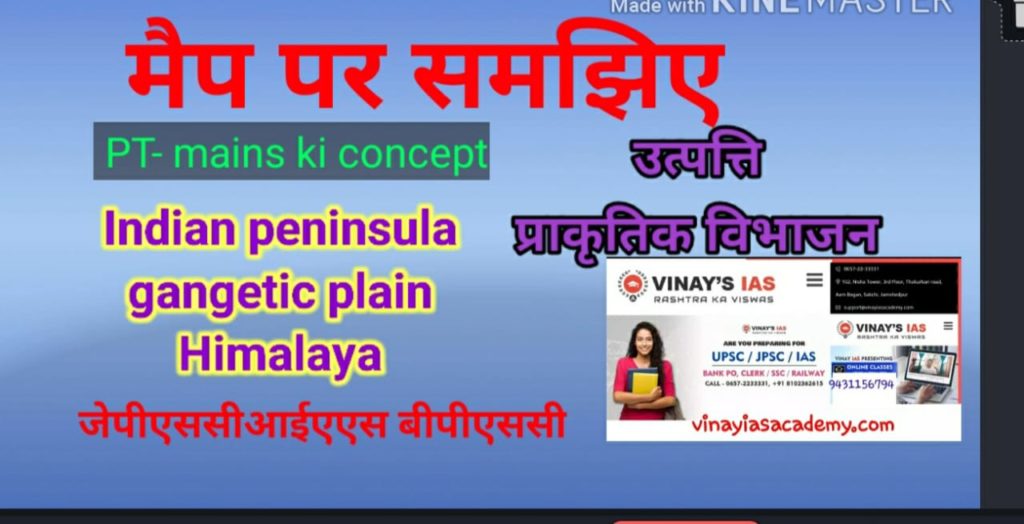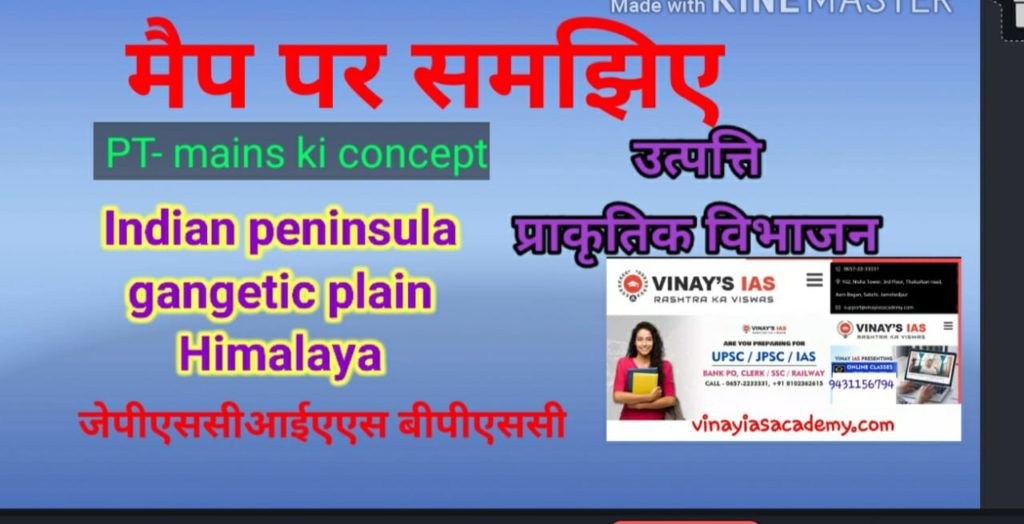🔸️ Red and Yellow solis:
Red soil develops on crystalline in igneous rock in the area of low rainfall in the eastern and Southern parts of the Deccan Plateau. red soil also cover are approximately 16 % of the total area of the country. in the soil develop the reddish colour due to a wide diffusion of iron in crystalline and metamorphic rocks. it looks yellow when it occurs in a hydrated form. these soils are generally poor in nitrogen, Phosphorus ,and humus.
Red soil gets its colour from the iron found in its composition in a crystallized form. The soil takes on a yellow colour when it is hydrated. These soils are generally found in the Western Ghats, Odisha and Chattisgarh. The clay form of red soil is nutrient rich and viable for forestation.
This soils are present in larger part of Tamil Nadu ,Eastern Andhra Pradesh, and Karnataka ,along with the southern parts of Maharashtra, Chattisgarh ,parts of Odisha and chota Nagpur region.
🔸️ Laterite soil:
Laterite soils developed in areas with high temperature and high rainfall .the soils are a result of intense leaching due to tropical rain .as heavy rains leach lime and silica, soil rich in iron oxide and Aluminium compounds are left Behind .humus content of the soil is removed quickly by bacteria that thrive in and high temperature.
Laterite has commonly been referred to as a soil type as well as being a rock type. This and further variation in the modes of conceptualizing about laterite (e.g. also as a complete weathering profile or theory about weathering) has led to calls for the term to be abandoned altogether.
The soils are poor inorganic matter, nitrogen ,phosphate ,and Calcium, while iron oxide and Potash are in excess .laterite soil is not suitable for cultivation; but application of manure and fertilizers make this soil fertile for cultivation.
This soils are commonly found in the wind ward side of Western Ghats in Karnataka, Kerala ,and other region with the rainfall of 200 cm or more.

🔸️Arid soil.
Arid soils have surface horizons with several unique characteristics. Many arid soils, for example, are covered by desert pavement that overlies vesicular A and E horizons. Other arid soils are covered by salt efflorescence in areas where shallow groundwater has risen by capillarity and evaporated at the surface.
Arid soil range from red to brown in colour.
They are generally Sandy in structure and saline in nature. in some areas ,the salt content is so high that common salt is obtained by evaporating the saline water. due to the dry climate ,high temperature, and fast evaporation .the lack of moisture and humus.
arid soils are covered by microbiotic crusts or by blankets of aeolian sand or silt. Nearly all arid soils have lower amounts of organic matter than their more humid counterparts. For classification purposes, the surface horizon (i.e., epipedon) that is ubiquitous for arid soils is the ochric epipedon.
Nitrogen is insufficient and the phosphate content is normal .calcium content is high in the lower layers of the soils .as a result, the lower horizon of the soil are occupied by “Kankar”. arid soils are present in western Rajasthan.
🔸️ Saline soils.
Saline soils are also known as “usara” soils. These soils a larger proportion of Sodium, Potassium, and magnesium, and thus they are infertile and do not support any vegetative growth .they have more salts ,largely because of dry climate and poor drainage .they occur in arid and semi-arid regions, and in water logged and swampy areas.

saline soils can be recognized by the spotty growth of crops and often by the presence of white salt crusts on the surface. When the salt problem is only mild, growing plants often have a blue-green tinge. Barren spots and stunted plants may appear in cereal or forage crops growing on saline areas. The extent and frequency of bare spots is often an indication of the concentration of salts in the soil. If the salinity level is not sufficiently high to cause barren spots, the crop appearance may be irregular in vegetative vigour.
Saline soils are widespread in western Gujarat ,Rann of Kutch region, and deltas of the eastern coast saline soil are prevalent in the Rann of Kutch region because the Southwest monsoon bring salt particles from the sea and deposit in this region. saline soils are prevalent in the deltas of the eastern cost because seawater intrusion in the deltas promote the occurrence of saline soil. This salt fill the small holes through which underground water is recharged. this process is is known as soil salinity, which further leads to desertification of land.
🔸️ peaty soils.
Peaty soil is dark brown or black in color, soft, easily compressed due to its high water content, and rich in organic matter. Peat soil started forming over 9,000 years ago, with the rapid melting of glaciers. This rapid melt drowned plants quickly and died in the process. Their decay was so slow underwater that it led to the accumulation of organic area in a concentrated spot.
Peaty soil are found in the areas of heavy rainfall and high humidity ,and there is good growth of vegetation .a large quantity of Dead organic matter accumulates in the areas ,and this gives are rich in humus and organic content to the soil. This soils are normally heavy and black in colour .this occur in traces in the Northern part of Bihar ,southern part of Uttarakhand, and the coastal areas of West Bengal ,Odisha, and Tamil Nadu.

🔸️Forest soil.
Forest soils, where soil formation has been influenced by forest vegetation, are generally characterized by deeply rooted trees, significant ‘litter layers’ or O horizons, recycling of organic matter and nutrients, including wood, and wide varieties of soil-dwelling organisms . There are also soils now covered with forest vegetation, often plantations, on lands that were not naturally forested.
Forest soil formed in the forest Areas where sufficient rainfall is available .these soils vary in structure and texture depending on the climate of the Mountain where they are formed. the snowbound area of the Himalayas, the experience denudation and are acidic with low humus content .the soil found in the lower fertile valleys are fertile. They are loamy and silty on Valley sides and coarse grained on the upper slopes.
4.SOIL DEGRADATION AND SOIL EROSION.
🔸️ soil degradation:
The decline in soil fertility is called soil degradation. The degree of soil degradation varies from place to place according to the topography, wind velocity ,and amount of rainfall.
Soil degradation is the loss of land’s production capacity in terms of loss of soil fertility, soil biodiversity, and degradation. Soil degradation causes include agricultural, industrial, and commercial pollution; loss of arable land due to urban expansion, overgrazing, and unsustainable agricultural practices; and long-term climatic changes.
The use of chemical fertilizers in the absence of organic manure is also harmful to the soil. Unless the soil gets enough humus,chemicals harden the soil and reduce its fertility in the long run.
It was also reported that all of the World’s topsoil could become unproductive within 60 years if current rates of loss continue.

🔸️soil Erosion.
The destruction of the soil cover in described as soil erosion.
The soil -forming processes and the erosional process of running water and wind go on simultaneously .there is a balance between these two process .the rate of removal of fine particles from the surface is the same as the rate of addition of particle to the soil layer.
Human activities have increased by 10–50 times the rate at which erosion is occurring globally. Excessive erosion causes both “on-site” and “off-site” problems. On-site impacts include decreases in agricultural productivity and ecological collapse, both because of loss of the nutrient-rich upper soil layers. In some cases, the eventual end result is desertification. Off-site effects include sedimentation of waterways and eutrophication of water bodies, as well as sediment-related damage to roads and houses. Water and wind erosion are the two primary causes of land degradation; combined, they are responsible for about 84% of the global extent of degraded land, making excessive erosion one of the most significant environmental problems worldwide.
Various type of soil erosion are as follows:
• wind erosion:
The term wind erosion refers to the damage of land as a result of wind removing soil from an area. Most often, wind erosion occurs on flat land in dry or sandy areas. It is significant in arid and semi-arid regions .For example: Rock formation in various location sculpted by wind erosion. Dunes, particularly in deserts, off of which sand is blown.
• water erosion:
Water erosion is the wearing away of the soil surface by water from rain, runoff, snowmelt, and irrigation. Rainwater in the form of runoff.
In regions with heavy rainfall and steep slopes ,erosion by running water is common and takes place mainly in the form of sheet or gully erosion.
• sheet erosion:
Sheet erosion or sheet wash is the even erosion of substrate along a wide area.Sheet erosion occur in wide range of settings such as coastal plains, hillslopes, floodplains and beaches. Water moving fairly uniformly with a similar thickness over a surface is called sheet flow and is the cause of sheet erosion. It takes place mainly on slopes but can also take place on level land after heavy shower, and the soil removal is not easily noticeable .it is harmful since it removes the finer and more fertile top soil.
• gully erosion:
Gully erosion is the removal of soil along drainage lines by surface water runoff. Once started, gullies will continue to move by headward erosion or by slumping of the side walls unless steps are taken to stabilise the disturbance.
It is common on steep slopes .gullies deepen with rainfall, cut the agricultural land into small fragments, and make them unfit for cultivation. a region with the large number of deep gullies or ravines is called Badland topography .ravines are widespread, in the Chambal basin .they are also found in Tamilnadu and West Bengal.
Www.vinayiasacademy.com
5.SOIL CONSERVATION:
Soil conservation is the prevention of loss of the top most layer of the soil from erosion or prevention of reduced fertility caused by over usage, acidification, salinization or other chemical soil contamination.
Techniques for improved soil conservation include crop rotation, cover crops, conservation tillage and planted windbreaks, affect both erosion and fertility. When plants die, they decay and become part of the soil.
plant residues and grass margins in order to better address the soil conservation. Political and economic action is further required to solve the erosion problem. Asimple governance hurdle concerns how we value the land and this can be changed by cultural adaptation.
Various techniques for soil conservation are as follows:
▪︎ Terrace farming:
In agriculture, a terrace is a piece of sloped plane that has been cut into a series of successively receding flat surfaces or platforms, which resemble steps, for the purposes of more effective farming. This type of landscaping is therefore called terracing. Graduated terrace steps are commonly used to farm on hilly or mountainous terrain. Terraced fields decrease both erosion and surface runoff, and may be used to support growing crops that require irrigation, such as rice.
This method of farming uses “steps” that are built into the side of a mountain or hill. On each level, various crops are planted. When it rains, instead of washing away all of the nutrients in the soil, the nutrients are carried down to the next level. Additionally, these steps prevent a free flowing avalanche of water that would take plants with it and destroy all of the crops on the hillside. This system also allowed them to build aqueducts, which carried water to each level.
▪︎Contour bunding:
Counter ploughing or counter forming aur counter bunding is the farming practice of creating a water break along the counter lines. the water break reduces heavy water runoff,which is a major cause of soil erosion .the water break also allows more time for the water to settle into the soil.
Contour bunding is a proven sustainable land management practice for marginal, sloping, and hilly land where the soil productivity is very low. It is widely adopted by the ethnic minorities of Nepal who practice the shifting cultivation system of farming. Over generations, they have successfully used this technology to control soil erosion, promote water retention, and increase crop production. It has a high probability of replication because it is simple to implement, is low cost, and makes the maximum use of local resources.
▪︎check dams:
A check dam is a small, sometimes temporary, dam constructed across a swale, drainage ditch, or waterway to counteract erosion by reducing water flow velocity.Check dams themselves are not a type of new technology; rather, they are an ancient technique dating from the second century.check dams are not a type of new technology; rather,they are an ancient technique.
▪wind breaks:
Windbreaks are linear plantings of trees and shrubs designed to enhance crop production, protect people and livestock, and benefit soil and water conservation. Windbreaks can provide valuable opportunities for vine and tree fruit growers, row crop farmers, livestock producers, and rural homeowners.
Wind breaker is usually made up of one or more rows of trees or shrubs, are planted in such a manner so as to provide shelter from the wind and to protect soil from the erosion .they are commonly planted around the edges on the farms. wind break around a home can reduce the cost of heating and cooling. windbreak are also planted to prevent snow from drifting on to roadways.

▪︎Agroforestry:
Agroforestry are Agro-sylviculture is a land use management system in which trees pr shrubs are grown around or among crops or pastureland.
It combines shrubs and trees into agricultural to create more sustainable land use system such as preventing soil erosion.
Agroforestry helps to conserve and protect natural resources by, for example, mitigating non-point source pollution, controlling soil erosion, and creating wildlife habitat. The benefits of agroforestry add up to a substantial improvement of the economic and resource sustainability of agriculture.
🔸️Agricultural practices for soil conservation:
▪︎ crop rotation:
Crop rotation, the successive cultivation of different crops in a specified order on the same fields, in contrast to a one-crop system or to haphazard crop successions. Growing of different crops on a piece or of land in a preplanned successions is known as crop rotation. the principal is to utilize the available resource to the fullest to harvest the maximum in a unit land without affecting the soil health. example of crops that can be shown in crop rotations are rice,red gram ,banana etc..
Broadly speaking, cropping systems should be planned around the use of deep-rooting legumes. If too little use is made of them, productivity will decline; if too much land is devoted to them, wastes may occur and other useful crops will be displaced. Rotations depending wholly on green-manure legumes should be confined to the more level and fertile lands. It is desirable to include legumes alone or in mixtures with nonlegume sod-forming crops as a regular crop in many field rotations. In general, this should occur about once in each four-year period. Short rotations are not likely to provide the best crop balances, and long rotations on a larger number of fields may introduce complications. With a moderate number of fields, additional flexibility can be provided by split cropping on some fields.
▪mixed cropping:
Growing of two or more crop simultaneously on the same piece of land is known as mixed cropping. it is also known as multiple cropping. this type of cropping leads to an improvement in the fertility of soil and, hence, increased the crop yield.
Since crops ripen during different seasons, planting more than one saves space and also provides a wealth of environmental benefits including maintaining a balance of input and outgo of soil nutrients; weed, disease, insect pest suppression; resistance to climate extremes (wet, dry, hot, cold); an increase in overall productivity, and management of scarce land resources to its maximum potential.

▪︎Inter cropping: growing two or more crops simultaneously with the distinct row arrangement on the same field at the same time is known as intercropping.
The most common goal of intercropping is to produce a greater yield on a given piece of land by making use of resources or ecological processes that would otherwise not be utilized by a single crop.
While intercropping involves the planting of more than one crop on the same piece of land at the same time, there are different methods of maximizing yield from this type of farming. Row intercropping involves planting more than one crop simultaneously, with at least one of the crops planted in a row.
🔸️ difference between mixed cropping and intercropping
▪︎In mixed cropping Seeds of two crops are mixed before sowing.whereas,in inter cropping Seeds of two crops are not mixed.
▪︎mixed cropping It minimizes the risk of crop failure due to lack of rainfall.whereas ,It increases productivity per unit area.
▪︎ in mixed cropping the crops are almost of the same duration. But in inter crop are of short duration and are harvested much earlier than the main crops.
▪︎ I’m mixed cropping sowing time is same for all the crops.in inter cropping sowing time may be same or different.
▪︎ Pest control is difficult in mixed cropping. Whereas, Pest control is comparatively easy in intercropping.
▪︎ in mixed cropping, Harvesting of crops is difficult.but in intercropping cropping Different crops from the same field can be harvested easily.
▪︎ Fertilizer application for the specific crop is difficult in mixed cropping. Fertilizers can be applied as per the need of the crop in inter cropping.
▪︎ Equal emphasis is given to all the crops in mixed cropping. More emphasis is given to the main crop in inter cropping.
🔸️ Mulching: a mulch is a layer of material applied to the surface of soil. It is used to retain moisture in the soil, suppress weeds, keep the soil cool, prevent frost heaving in winter, and make the garden bed look more attractive. mulch performs the following functions:
• conserve moisture.
• improve the fertility and health of the soil.
• reduce weed growth.
• enhances the visual appeal of the area.
Bark, Shredded or Chipped
Pine Needles
Grass Clippings
Newspaper
Shredded Leaves
Straw




